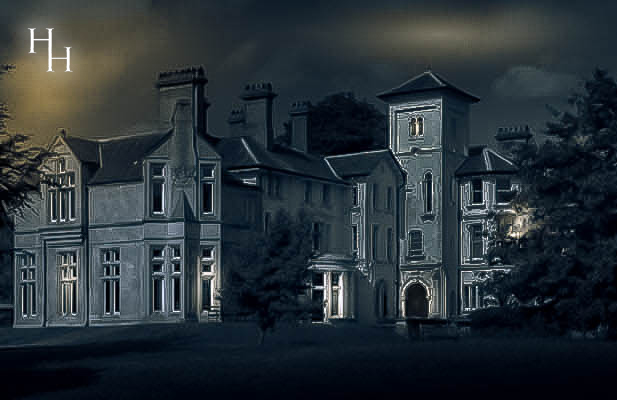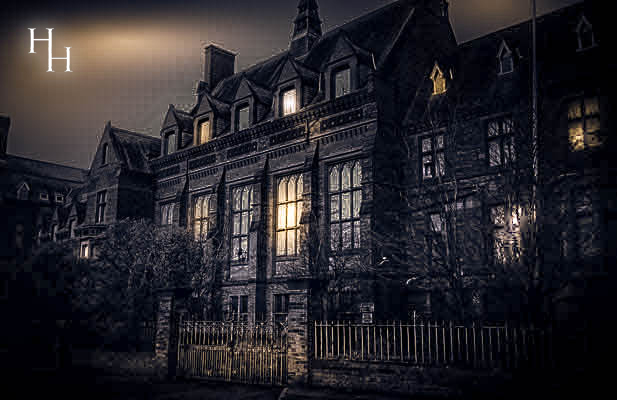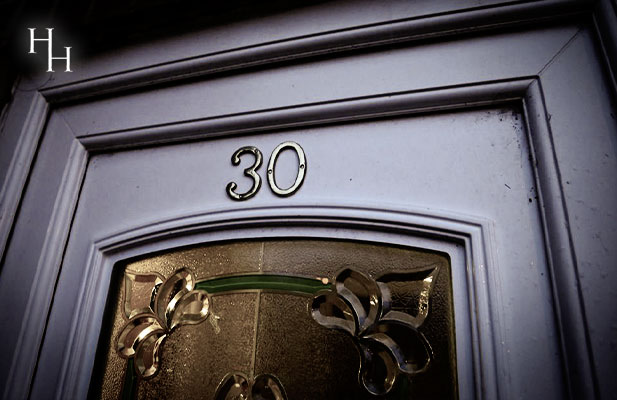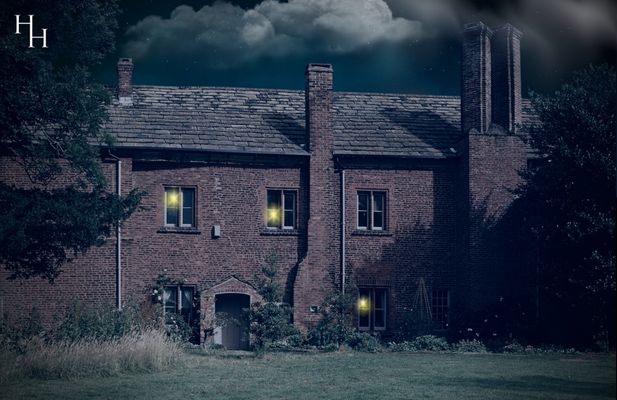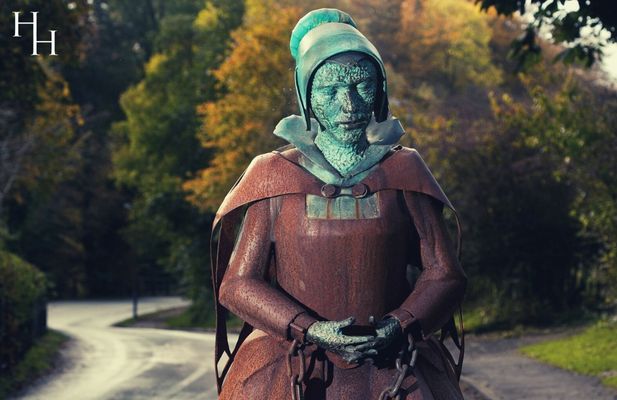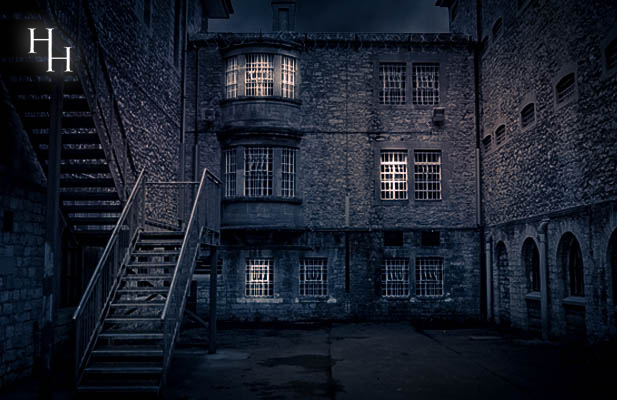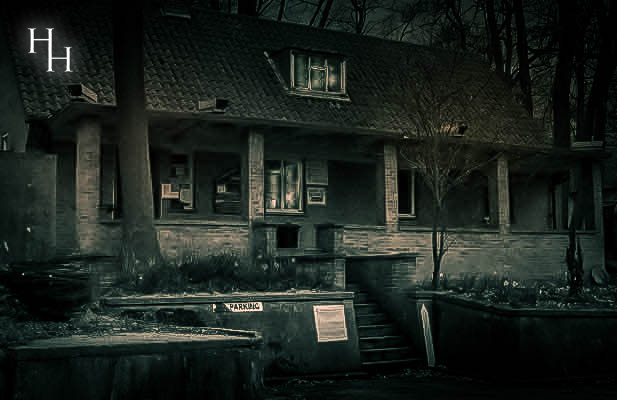Your Ghost Hunt at Avenue House
Avenue House in haunted Finchley has a reputation of unexplained occurrences dating back many years. During past overnight ghost hunts here sinister footsteps have often been heard coming from locked rooms, ghostly shadows and figures have been witnessed in the chilling cellar rooms.
Join Haunted Happenings as we carry out vigils and experiments, witness for yourself Finchley's haunted mansion in the dead of night. During the night there will be opportunity to explore the location for yourselves and for the brave the chance to spend time alone in the sinister cellars.
Ghosts of Avenue House
Avenue House has many ghost who are seen wandering the corridors and not just in the dead of night. Visitors and staff at the mansion often encounter unexplained activity and have experienced unexplained cold spots, hushed conversations from empty rooms chilling screams from the upper floors whilst children's laughter has been heard coming up from the cellars along with the apparition of a lady being seen to walk the stairs and disappear when reaching the top landing, is this one of the former governesses of Avenue House?
The cellar areas seem to be a magnet for children, where previous guests have felt unexplained cold spots and objects have been moved by unseen hands.
History of Avenue House
Avenue House has a history dating back almost 1000 years. Once owned by the Bishop of London and built on land that was granted to the Knights Templars, known as Temple Croft Fields. The Knights Templars were one of the most powerful forces in this area. These lands were seized by Henry VIII and for the next few hundred years the lands passed through various hands.
In the mid 1800's, Edward Cooper, built Avenue House. In 1874, Avenue House was then bought by Henry Inky Charles Stephens, Inky because his father was the inventor of the famous blue-black ink. In 1918, Inky sadly passed away leaving his entire estate to the people of Finchley.
In 1989 the east wing of the house was gutted by fire, but it has been restored to its former condition. The house is now a meetings and events venue, while the gardens and arboretum are open to the public free of charge. The house and gardens are now managed by an independent charitable body, the Avenue House Estate Trust, which took over responsibility from London Borough of Barnet in 2002.
The stables are a courtyard complex of buildings in a Gothic Revival Style by Rodgers Field, comprising a stable range with tower on the north, a coach house on the east side and a two storey coachman's house (the Lodge) opposite the tower. The design of the dovecote attached to the stables has strong similarities to the tower of Christ's College Hendon Lane, built by E.Roberts 20 years earlier, and may have been consciously modelled on it. The buildings were constructed in yellow brick with stone dressings and slate roofs to the rear of the Coach House, where a reinforced concrete retaining wall matches the Bothy wall construction.
The construction of the 'Bothy', as it is now known, was part of Stephen's original plans when he purchased the estate in 1874, but work didn't start until 1878. Stephens produced sketch plans for 'garden walls and buildings' shortly after his purchase of the property and prior to the appointment of a formal architect.
The site of the Bothy, or the kitchen garden as it was then known, was chosen under Marnock's guidance. The setting of the Bothy is integral to the landscape design as a whole. The idea of buildings as landscape elements has earlier associations in landscape design, for example the 18th Century picturesque designs of Capability Brown incorporating follies, temples and 'ruins'. The Bothy's castellated walls, and its location as an eye catcher at the top of the cascade, fit with this romantic landscape tradition. It was also designed to be viewed from the drive and probably from the upper floors of the house. It fits well with both Marnock's approach and that of Pulham whom he'd worked closely with constructing cascades and garden features on other commissions.
Given Marnock's role in the design and layout of the grounds and location of the Bothy, he would certainly have had ideas as regards the structure and perhaps the Moorish design of the castellated walls which makes it distinct and clearly different from the house and other buildings on the estate.
The Bothy is a large rectangular enclosure, containing a garden with ancillary buildings to the eastern end. The buildings, divided off from the garden by a high concrete wall comprise a central two storey 'core' building that create courtyards either side to north & south with single storey outbuildings built into and facing inwards from the north and south walls. The Bothy is an early surviving example of reinforced concrete, the garden walls externally rendered in pebble-dash, the courtyard outbuildings in smooth render and the two storey core building smooth render finished and scored to resemble ashlar work.
The Bothy was conceived to allow the whole estate to be self-sufficient, through provision of glasshouses, fish ponds and forcing pits within the garden, storage (for seed, food, tools and machinery), a dairy, an abattoir, room for farriers, and housing for the principal estate workers all being found within it.
The Bothy 'sheds' appear complete by late 1880, given Stephens decided then to introduce a herd of highland cattle to the Estate on the adjoining Great Tapes Field, east of the gardens. The facilities of the building no doubt provided for the needs of the household and the farm, but they were also an 'experiment' for Stephens to explore further his interests and ideas. The Estate maintained the herd of highland cattle, a flock of sheep and a stable of Cleveland Bay Horses. It was certainly a prototype upon which he was able to develop and explore ideas that led to the creation of the Cholderton Estate, considered at the forefront of research into crops, breeding and animal husbandry from 1900 onwards and a leading example of a 'New Model Farm'.
The shell of the kitchen garden was completed by July 1882. It is certain that Marnock, with his 'cutting edge' expertise in hot houses would have advised on the internal layout of the kitchen garden, the orientation and positioning of the glass houses and forcing pits. The glasshouses were supplied by William Temple and laid out in a symmetrical arrangement on the north wall and within the garden. There was a tropical house with palms, vineries, greenhouses, cucumber, melon and tomato pits and an orchard house for some vegetables and strawberry growing. There was a well and a sunken forcing house, and there were brick cold frames which remained until the 1960s.
Your Event Includes
- Use of ghost hunting equipment including EMF Meters, K2 Meters etc.
- Experiments including glass divination, table tipping and Ouija Boards.
- Workshop and separate vigils for returning guests.
- Ghost hunting vigils and séances in small groups.
- Includes teas and coffees
- Free time to investigate alone
Address, Maps & Hotels
Address & Hotel Information
Avenue House
17 East End Road
Finchley
London
N3 3QE
For Hotels near to
Avenue House , please click here. opens in a new window
Parking
Information
Accessibility
- This location is not suitable for wheelchair users
- This location is not suitable for people with mobility issues or walking difficulties
Important
- All attendees must be 18 years or older
- All attendees must bring a torch
- Wear sensible shoes and warm layered clothing as the location may get cold at night




